Could magnetic pendulums be combined with calligraphy? Yes, I think they can, and might produce very interesting results.
The question was sparked by my FB post of a magnetic pendulum fractal and the follow up messages of my PhD colleague Hung Keung who had been working with Chinese characters and calligraphy in his practice.
Magnetic pendulums – a magnetic pendulum bob moving over multiple stationary magnets – are chaos generators. Here is an image that shows the fractal that can be generated by virtually tracing the motion of a pendulum bob to its final resting spot over one of 3 magnets:
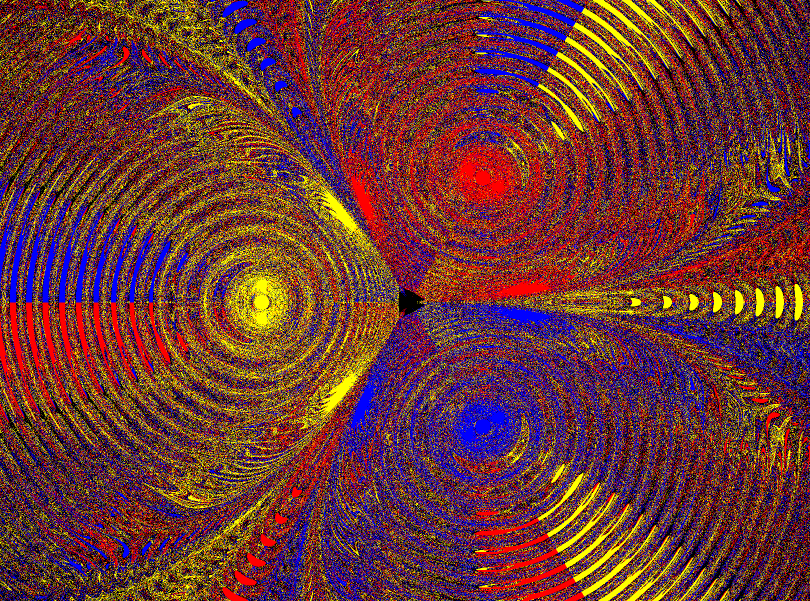
Here are a view videos of a magnetic pendulum in action:
- http://www.ferzkopp.net/Videos/Pendulum0.mp4
- http://www.ferzkopp.net/Videos/Pendulum1.mp4
- http://www.ferzkopp.net/Videos/Pendulum2.mp4
- http://www.ferzkopp.net/Videos/Pendulum3.mp4
The way the above fractal images are created, is by tracing every possible starting position of the pendulum (the 2D image) and coloring the pixel based on the magnet that is nearest after some time (or when the pendulum stops moving).
Here are some images of the path the pendulum can take:
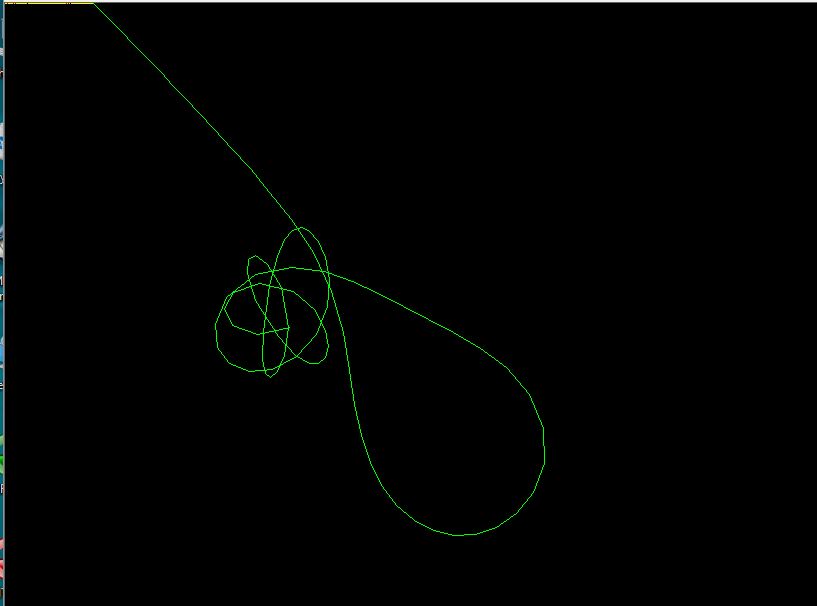
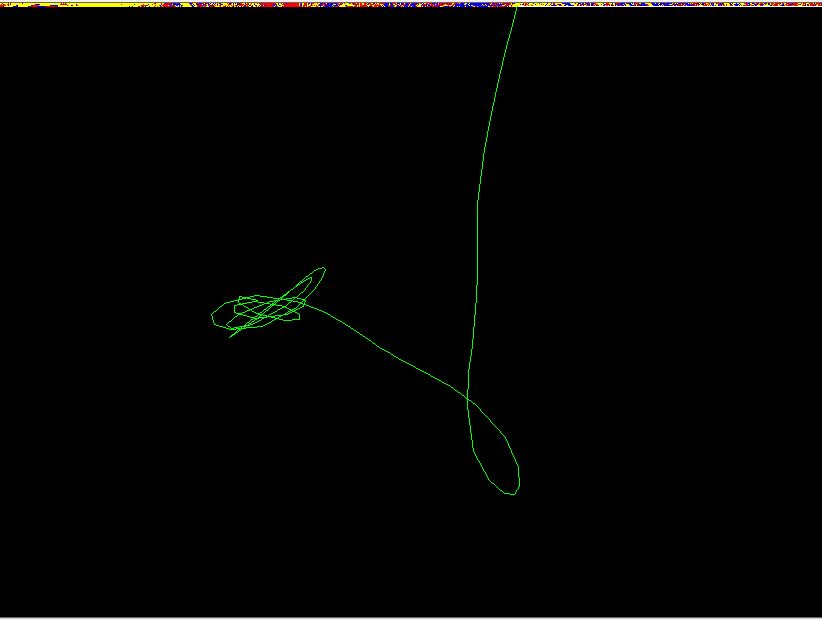
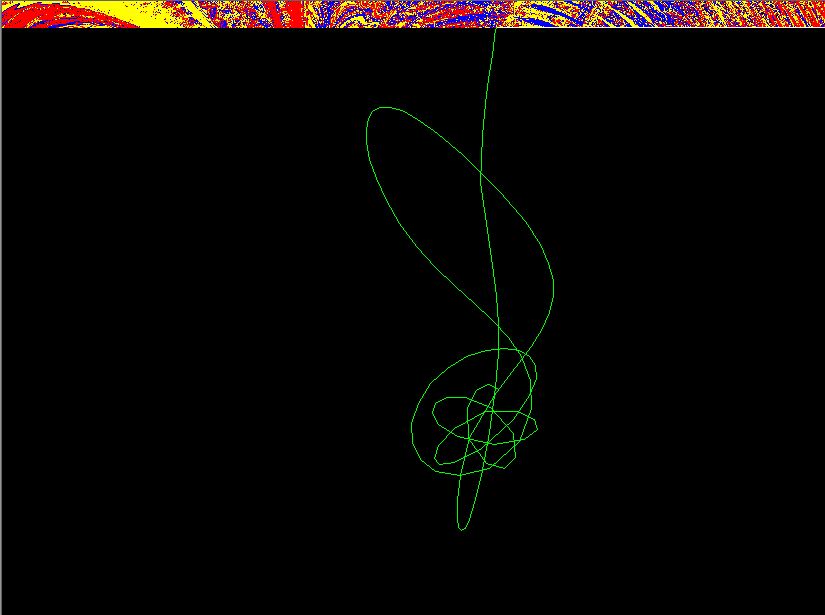
As mentioned before, the motion of the pendulum is highly chaotic – that is, one cannot predict the path or final resting spot in many cases – due to the nature of such a dynamic physical system.
Calligraphy – in general terms – is the art of writing. Asian cultures have used this form of communication for centuries (書法 in Traditional Chinese, literally “the method or law of writing”) and many characters are quite artistic in nature.

The idea is now, to apply a pendulum to calligraphy. The goal is to build a system that acts like a magnetic pendulum system (physically or simulated), and has a mechanism that allows the pendulum to “draw” on demand – an artist controls the starting position of the pendulum and the time when things are being drawn. Magnetic pendulum calligraphy is thus the art of writing with a magnetic pendulum.
Here is a “Photoshop” simulation (right) of this method against a path (left) to illustrate how this could look like:
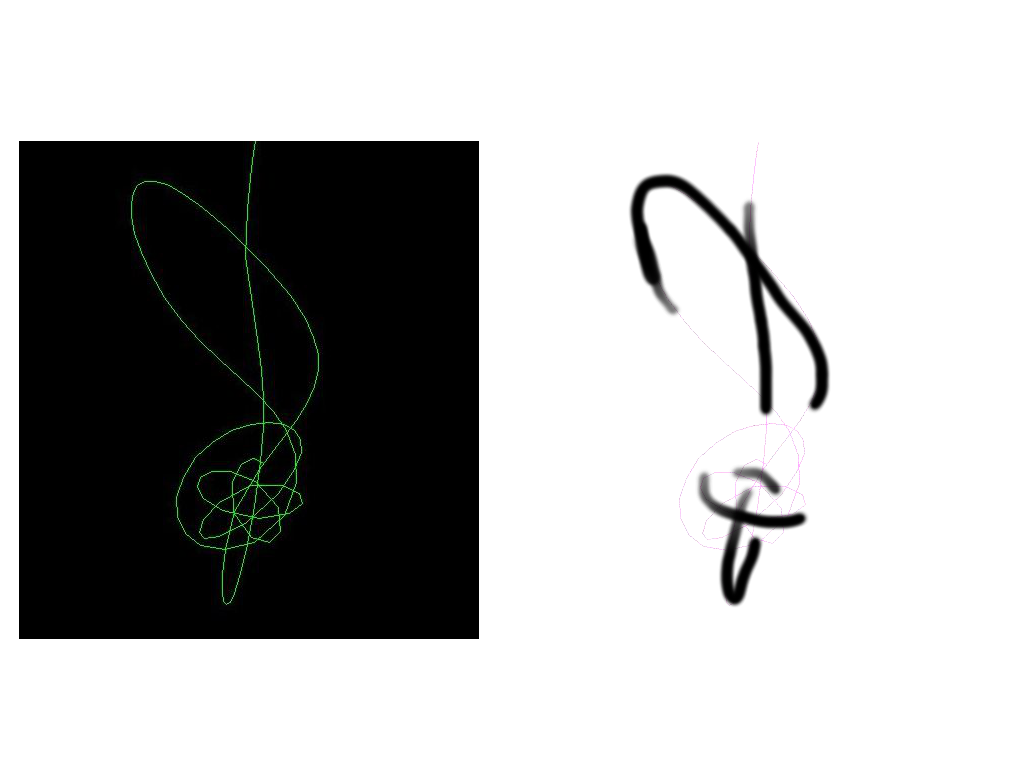
I think a physical implementation of such a system would be quite interesting as an experimental playground, as it combines the deliberate action of writing with the chaotic action of the pendulum . The pendulum should probably large enough so the bob swings over a 1x1m base with a paper on it (magnets are below the paper). It would need a brush system that can be lowered by user action or remote control on demand. Something like this:
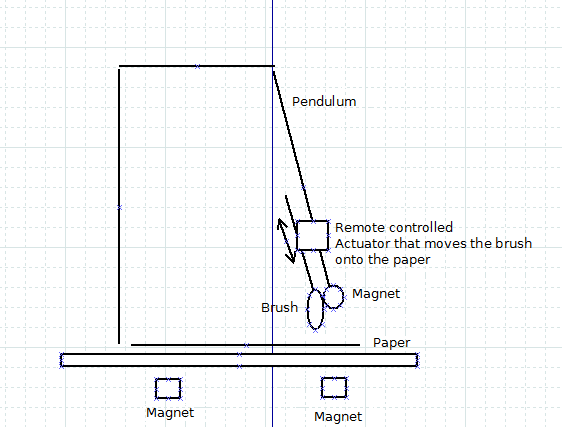
I envision that the interactions of the artist and calligrapher with the system would proceed in the following way:
- the magnets below the paper can be modified; number of magnets (1 or more) and position
- once the plane magnets are set, the pendulum could me modified (if designed that way) for example in length, weight or strength of magnet
- next the user would need to experiment with the motions of the pendulum – the basic control is the position of where the pendulum is launched from (and theoretically an initial speed) – and follow the path to see if there are interesting patterns
- at this point, the user will find that certain positions are highly stable (always the same path) and others are highly unstable (always random path, unpredictable switch between certain patterns) and that due to the nature of the manual launch which prevents a exact repeat, the whole thing is often a guessing game at this point
- next the user would prepare for painting, maybe with a choice of brush, ink and paper
- then the actual calligraphy would start as the user would swing the pendulum, and would trigger the brush to deposit ink with a remote while the pendulum swings around;
- the attempt to paint different “characters” could be repeated multiple times while the paper is being moved between each attempts in an effort to create a sentence
- the process of depositing ink will cause friction to the pendulum and changes its path – so even if the user had found a starting position that creates an interesting and stable path, once the brush painting is turned on, the path may turn into an unstable path
Creating a 2D simulation shouldn’t be too difficult either – the magnetic pendulum formula is published (i.e. here http://www.codeproject.com/KB/recipes/MagneticPendulum.aspx?display=Print) and the simple “brush on canvas” processing can be triggered using a mouse-click. One could also make a full 3D simulation, but that would require much more work but could be a way to create this system for VR.
However, the difference between a simulation and a real physical pendulum are very fundamental, and in my view reality wins.
- The tactile nature of a physical pendulum is not present in a simulation and very hard to model with current input devices, even in VR.
- A physical simulation that takes into account the influence of mechanical factors (hinges, friction, air) and the magnetic forces (non-uniform fields, magnet shapes) on the final motion is quite a challenge.
- To recreate the subtlety of the brush-sliding-over-paper-to-draw, all with stroke subtleties and friction influence on how much ink is deposited, is another difficult simulation problem.
- The performative nature of an artist writing “pendulum calligraphy” is mostly lost in a simulation.
I think the first step should be, to build a magnetic pendulum calligrapher.
Note: Something similar has been done before. Here is a more traditional pendulum painting setup: http://gizmodo.com/5503600/the-paint-and-the-pendulum – personally I find the outcomes somewhat boring, since a traditional pendulum makes primarily predictable periodic paths.

Pingback:Magnetic Pendulum Calligraphy (v1) – ferzkopp.net